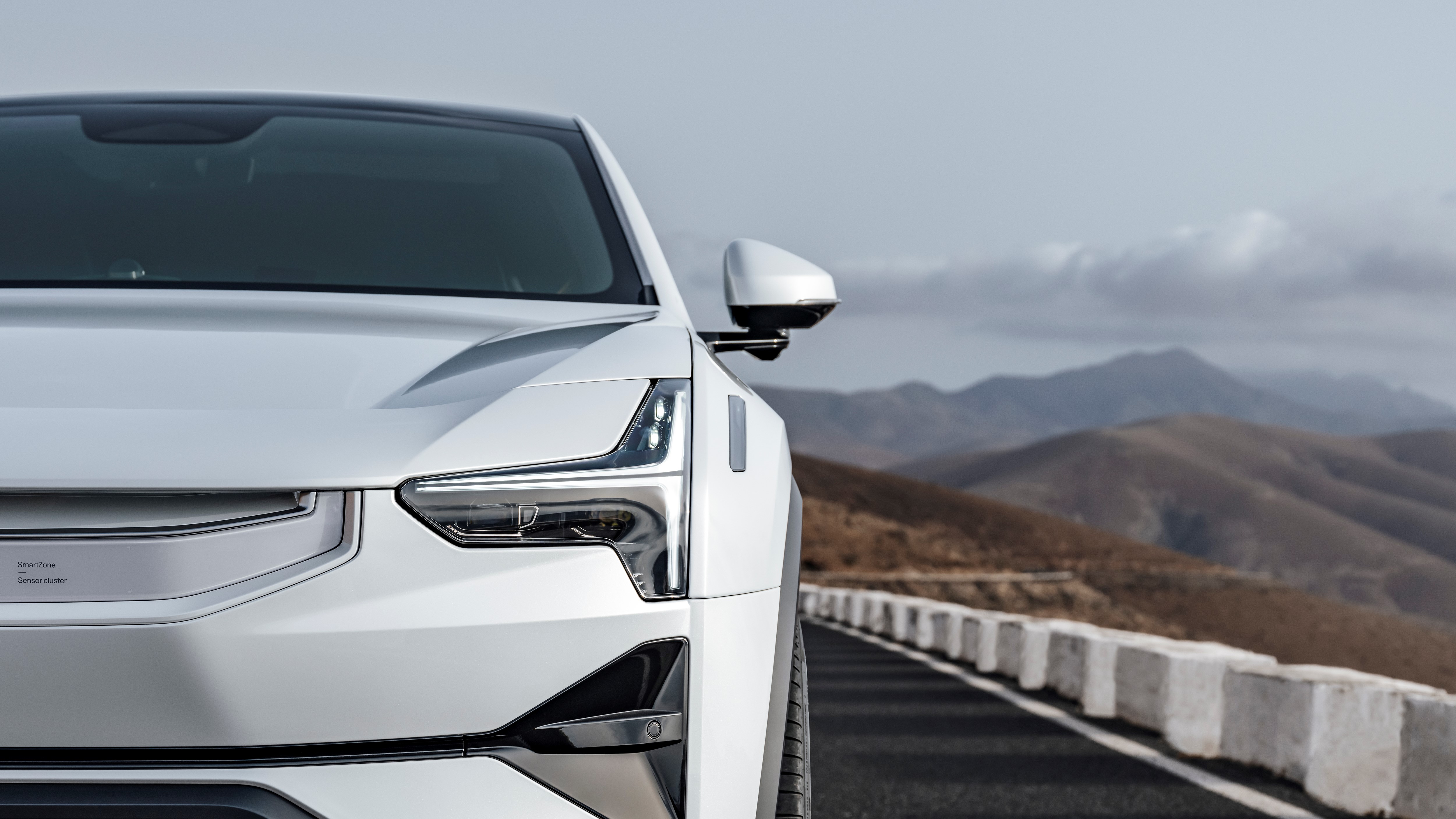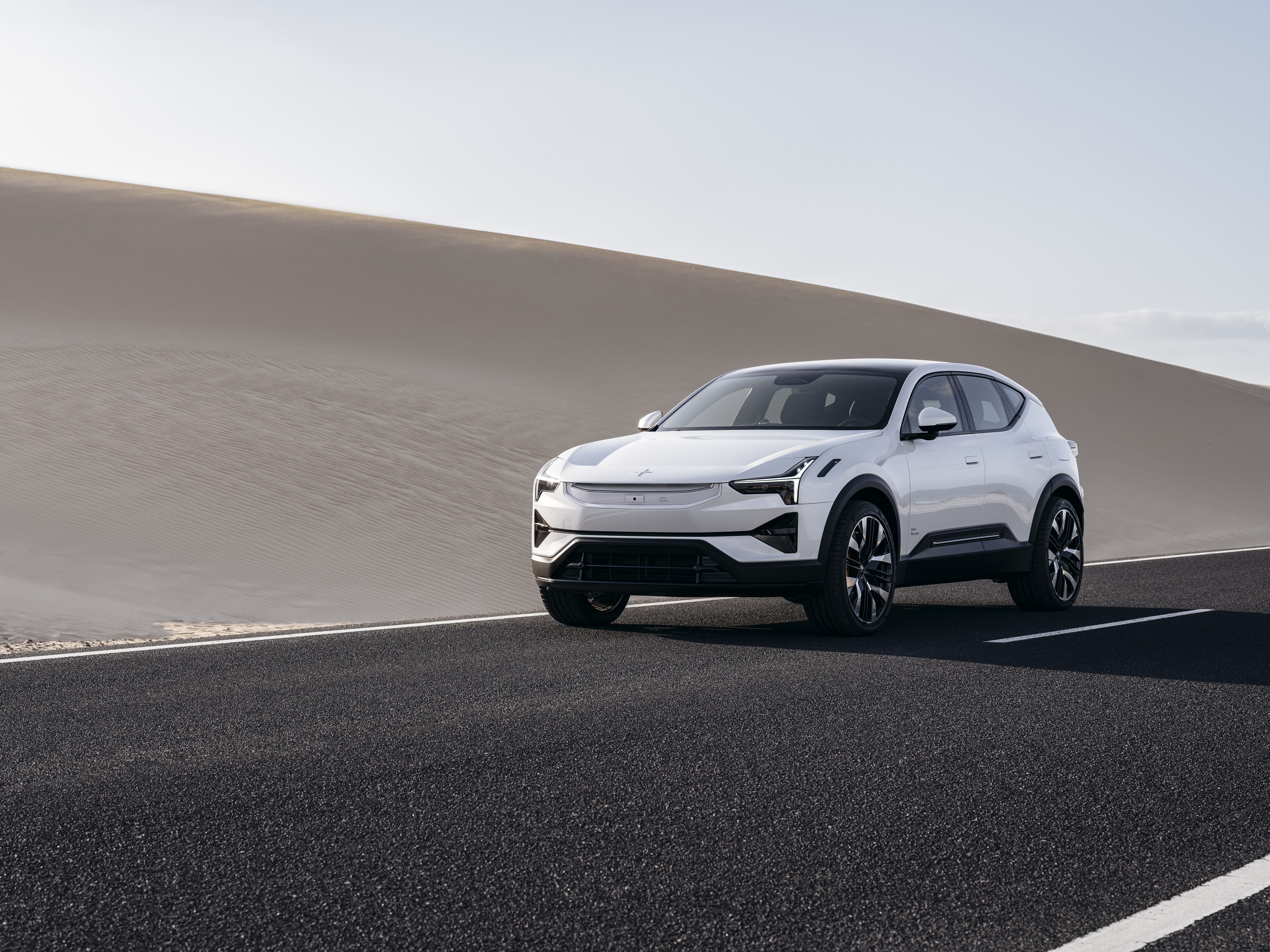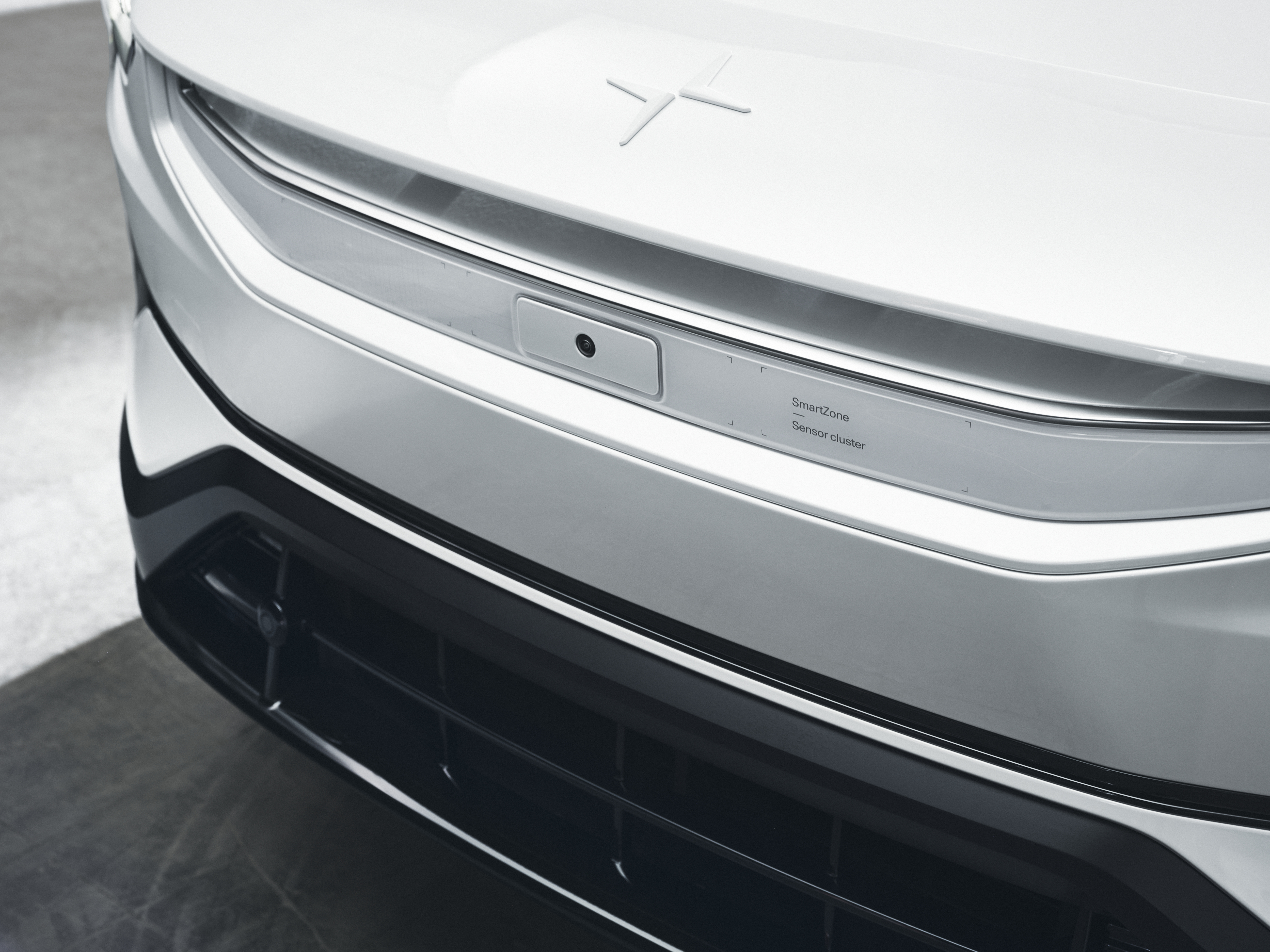Polestar 3 — everything we know so far

Release date: Q4 2023
Price: From $85,300
Power: 510HP, AWD
Battery range: 379 miles (WLTP); TBA (EPA)
0to 60 mph: 4.7 seconds
Smarts: Luminar LIDAR, semi-autonomous highway piloting, Android Automotive OS
The race to carbon-neutral has been cranked up another notch. Amongst a growing field of electric SUVs, Gothenburg’s brightest are poised to unleash the long-awaited Polestar 3 upon a climate-conscious clientele — and we’ve got all the electrifying details.
Boasted as the company’s first SUV, Polestar have done its homework on this one. Referring to the U.S. as “no longer an export market, but a home market," the Polestar 3 will be the first Polestar vehicle built in America. This is to reduce delivery times, environmental impact, and, importantly, the 3’s price in line with competitors.
Speaking at the reveal event in New York, Polestar CEO Thomas Ingenlath did not stutter: “We are not a virtual company waiting to build factories and sell cars; we are an actual company already building and selling cars around the world. We will build in America for Americans.”
Polestar 3: Price and availability

Polestar has officially announced that the Polestar 3 will start at $85,300, which gets you the Long Range Dual motor model. A version of that car with a "Performance pack" is also available, with prices starting at $89,900.
Those prices make the Polestar 3 significantly more expensive than the Polestar 2, which starts at $45,900 in the U.S. The goal here seems to be to offer a luxury SUV, which will command a much higher price and a different customer base.
Notable competitors include the Tesla Model X, which starts at $120,990, and the $65,990 Tesla Model Y — the latter of which has proven incredibly popular. Other luxury SUVs include the $71,300 Jaguar I-Pace, the $84,100 BMW iX and the $54,975 Mustang Mach-E.
So the Polestar 3 is not cheap, and that high price tag means it won't be eligible for the federal EV tax credit under the new rules. Those are set to cap the price of eligible SUVs and trucks to $80,000.
Get instant access to breaking news, the hottest reviews, great deals and helpful tips.
Pre-orders for the Polestar 3 are open now, and deliveries are currently scheduled to begin in Q4 of 2023.
Initial production is set to begin in mid-2023 at a Volvo Cars facility in Chengdu China. U.S. production won't commence until sometime around mid-2024, taking place at Volvo's plant in Ridgeville, South Carolina. Deliveries from the U.S. facility will begin shortly after.
Polestar 3: Design and interior

Polestar has previously and oh-so boldly proclaimed that the 3 “will define the look of SUVs in the electric age.” Now that we've seen the car unveiled in full, we can kind of see what it means, though there is the usual serving of bluster and self-hype in there as well.
The profile of the Polestar 3 is very similar to other SUVs. After all there are so many ways you can design an SUV-sized vehicle to maximize aerodynamics. You have the curves and the channels to guide air around the car, and boost driving efficiency, as well as the now-commonplace flush door handles.
On top of this Polestar has implemented a frameless side mirror design, which it claims makes them 30% smaller and further improves aerodynamics. I'm also happy to see that there's also a rear windshield wiper, with Polestar not following the trend of removing this in an attempt to further reduce drag.
Look even closer and you'll see the Polestar 3 does have all those futuristic flourishes that make a Polestar a Polestar. You can see some similarities to the Polestar 2, but a lot of things have changed.
One notable redesign is the rear light bar at the back of the Polestar 3. It's still a full-length bar, with the angular design from previous Polestars. But it's been flipped this time round, and the bar is right below the rear window rather than halfway down the trunk.
Polestar did something similar to the front headlights. Compare them side by side with the Polestar 2's headlights and you can see some similarities. But the design is now more angular and cut down than before. Also gone is the fake grill at the front, replaced with an array of cameras and sensors for the autonomous driving systems.

Glance at the inside of the Polestar 3, and you can see that the automaker is really leaning into the luxury side of things.
The most prominent feature is the 14.5-inch vertical display in the center console, described as an "evolution" of the 11.5-inch unit from the Polestar 2, alongside a 9-inch driver display. The car is set to run on Android Automotive OS once more, and promises to offer over-the-air updates to continually improve both the software and the car itself.
Being linked to Google means that the car's own route-planning, which accounts for battery level and recharge needs, is powered by Google Maps. So no dealing with awkward of straight-up terrible navigation systems when you drive long distance.
Speaking of which, Polestar promises that the car's infotainment system will be powered by the Snapdragon Digital Chassis, a cloud-connected car platform. The goal is to offer high-definition displays, premium sound and seamless connectivity. However, Nvidia will provide the brain for the more high-profile features, which we'll get into later.
Other interior features include a Bowers and Wilkins 3D surround sound system, with Dolby Atmos and 25 speakers. Just in case you really needed immersive audio in your car. On top of that there's a panoramic glass roof, a head-up display, metallic décor made from 80% recycled aluminum, and an infrared windshield that promises insulation from the elements and reduce noise from the road outside.

Upholstery comes in two options, the vegan "bio-attributed MicroTech" and "Animal welfare wool." The MicroTech is made from renewable vinyl and recycled polyester textiles, while the wool is sourced from farms that "a progressive approach to animal welfare and material production."
It's also possible to upgrade to Nappa leather, which again come from responsible sources. This upgrade also adds ventilated seats with a massage function — but it's not clear if those two features will be available with vegan-friendly material.
As for cargo, you can expect 17 cubic feet in the trunk, which includes 13.9 cubic feet of actual trunk space and an additional 3.1 cubic feet under the floor. Fold the rear seats down and that total increases to 49.8 cubic feet. The Polestar 3 also offers a 1.1 cubic foot frunk for smaller loads.
The back seats also look pretty roomy, with more leg room than you'd get on a commercial airliner — low as that bar actually is. In fact the whole car seems pretty spacious, whereas the Polestar 2 has always felt a little compact for taller people like myself; that's the benefit of opting for the SUV design.
The downside is that you’ll only be able to fit up to five people inside. You’ll have to go to Volvo if you want seven.
Polestar 3: Battery, range and charging

Early estimates suggested that the Polestar 3's 11 kWh battery would offer range within the region of 372 miles — per the WLTP testing cycle. This isn't too far off the truth, with Polestar's early testing offering up a range of 610km, or 379 miles.
But that's WLTP, which is known for being quite liberal with its figures compared to the EPA. That's reflected preliminary figures listed over on Polestar's U.S. website, which claim a maximum range of 300 miles in the Long Range Dual Motor model. The same model with the Performance pack only has 270 miles, a dip that is standard for Performance-tuned cars.
Those figures are pretty good. They may not be record-breaking, but they're strong enough to compete with a large number of rival electric SUVs. Like the 310 mile Kia EV6, the 303 mile Hyundai IONIQ 5, and the 324 mile BMW iX. It's also significantly higher than the 234 mile-rated Jaguar I-Pace.
As for charging, the Polestar 3 will be capable of handling up to 250kW DC rapid charging — the same speed offered by Tesla Superchargers. This promises to take your battery from 10-80% in 30 minutes. The slower AC charging tops out at 11kW, and takes 11 hours to fully recharge a battery from zero.
It would have been nice if Polestar had included 350kW charging, like the Ford F-150 Lightning or the Hyundai IONIQ 5, but 250kW is still better than most.
Polestar's also made a point of mentioning the car's heat pump. Rather than using a traditional heater, with heated coils, the heat pump will draw in heat from the environment — a process that uses noticeably less power. That's going to be of particular help when you trying to maximize your range in winter.
Polestar 3: Power and performance

The best things about an electric SUV is that they are quick off the mark. Instant torque ensures the car will move as soon as you put your foot down, leading to some impressively low 0-60 mph times.
The Polestar 3, with the Performance Pack, can travel from zero to 60 in 4.6 seconds. That figure rises to 4.9 seconds without the Performance pack, which means this is a pretty speedy car — for an SUV at least.
For reference, the standard Tesla Model Y hits 60 miles per hour in 4.8 seconds. Of course the Performance model still kicks the Polestar 3's proverbial butt with a 3.5 second time. The Kia EV6 and Hyundai IONIQ 5 clock in at 5.2 seconds, though the Jaguar I-Pace is slightly faster at 4.5 seconds.
As for top speed you're looking at 130 miles per hour. That's far from the fastest electric car right now, but it's a lot faster than normal streets will allow. Both models have the same top speed, from what I can tell, and the performance is aided by active air suspension that adapts to maximize aerodynamic efficiency at high speeds.
If you want to quantify where all this performance is coming from, know this: the Long Range Dual Motor Polestar 3 has 489 horsepower and 620 lb-ft of torque, while the Performance pack increases those figures to 517 horsepower and 671 lb-ft of torque.
Polestar 3: Autonomous driving

We know one big thing for certain with the Polestar 3, as the Swedes have featured it front and center: LiDAR. Powered by an Nvidia computer and Lumiar sensors on the front, rear, and sides of the vehicle, LiDAR will help Volvo's Highway Pilot system offer semi-autonomous driving.
According to Polestar the LiDAR will allow the Polestar 3 to scan the environment and create a 3D picture of everything around it. The benefit compared to traditional radar and camera based sensors is that adverse weather and low-light won't impede the sensors — especially over long distances.
The caveat there is that you need to purchase the Pilot pack with LiDAR to take advantage of the tech. Sadly, that won't be available to order until Q2 2023 at the earliest, and it's unclear how much it will cost. Probably a lot, since LiDAR tech is known to be expensive.
Without LiDAR the Polestar 3 will have to rely on a huge range of other sensors. That includes 12 ultrasonic sensors, five radar systems, five cameras and two driver-monitoring systems. So you're not going to be put out too much if you don't sit around waiting to see how much LiDAR will set you back.
There had been speculation that Polestar would introduce something similar to General Motors’ SuperCruise system. That way the driver can remove their hands from the steering wheel at certain points, provided their attention remains firmly on the road ahead.
It's not entirely clear whether that will be the case at launch, but the fact Polestar has included driver-monitoring systems suggests it could at least become a possibility after a future update. The two cameras track the driver's eyes, noting where you're looking and what your eyelids are doing, with the goal of alerting you if you seem drowsy or distracted.
Other autonomous and safety-inclined features are pretty representative of most recent electric cars on the road. That includes adaptive cruise control, lane centering technology through Volvo's Pilot Assist feature, forward collision avoidance, blind spot monitoring and a cross traffic alert with automatic brake. That last one will ensure you don't pull out of a parking space into a person, cyclist or oncoming traffic.
Polestar 3: Outlook

The electric SUV segment is incredibly competitive, and it's only going to get worse as more automaker make the transition to electric cars. The Polestar 3 has a lot to prove if it's going to succeed, especially since the company wants to hone in on the American car market.
Thankfully Polestar has already been making a name for itself with the electric Polestar 2 and the Polestar 1 plug-in hybrid. The fact it's also part of Volvo, and has access to all the resources that company can offer, means it has an advantage over the startups and newcomers hoping to capitalize on EV demand.
Volvo's decades-long reputation for safety and reliability also helps make up for the fact the Polestar 3 doesn't really have a unique selling point right now. The LiDAR system may become useful as autonomous driving technology improves, but there's almost nothing the Polestar 3 has that you couldn't get elsewhere — and for a lower price tag.
Then again there are far worse things to offer than competitive specs and a price that, while high, is dwarfed by some of the competition (looking at you, Tesla). We'll just have to see how this one plays out over the coming years.

Tom is the Tom's Guide's UK Phones Editor, tackling the latest smartphone news and vocally expressing his opinions about upcoming features or changes. It's long way from his days as editor of Gizmodo UK, when pretty much everything was on the table. He’s usually found trying to squeeze another giant Lego set onto the shelf, draining very large cups of coffee, or complaining about how terrible his Smart TV is.
